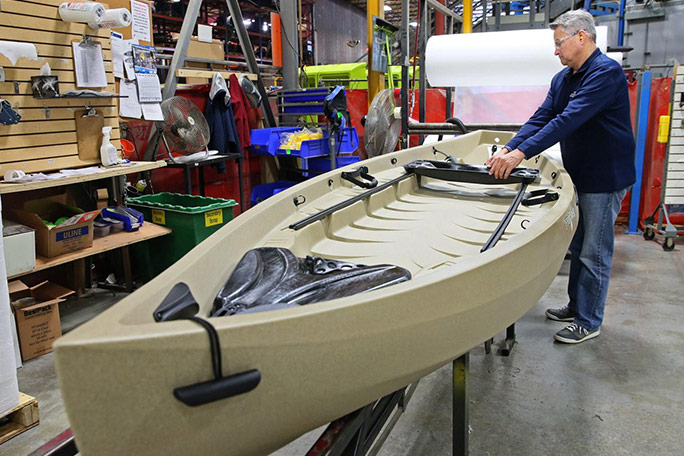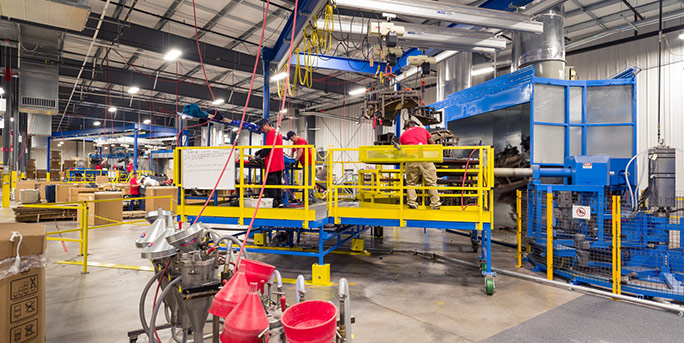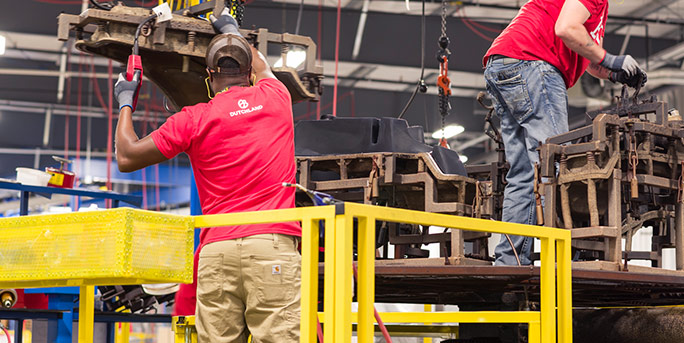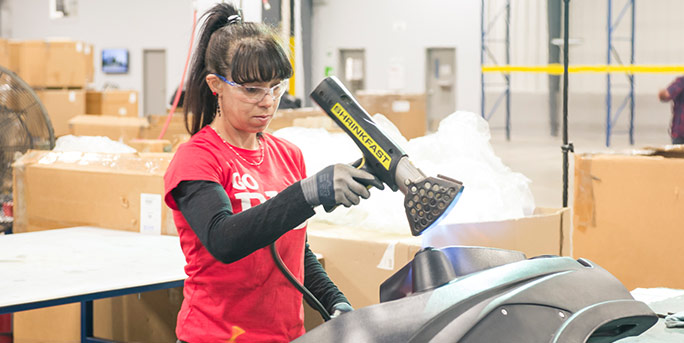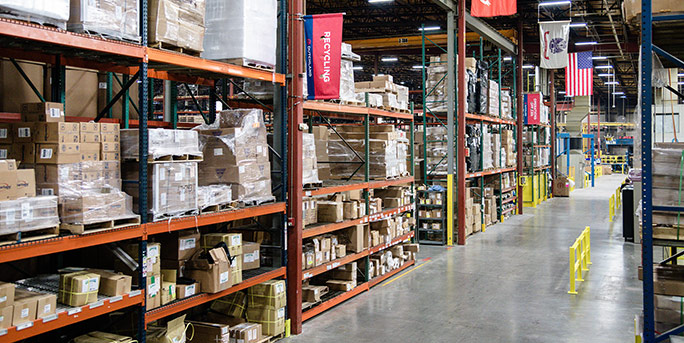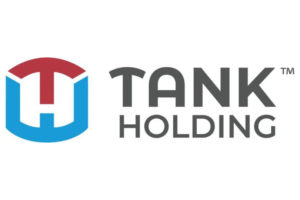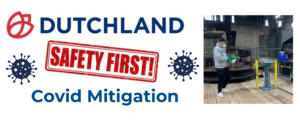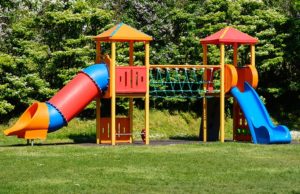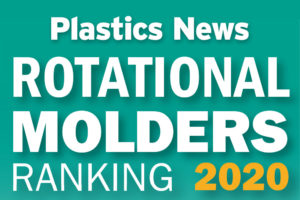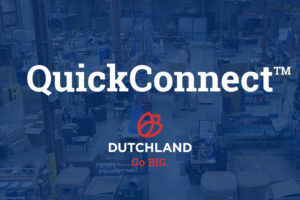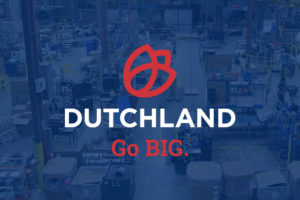Dutchland is one of the top custom rotational molders in the country. But what is rotational molding and what are the advantages of using this plastic forming process.
History of Rotational Molding
Rotomolding as a process dates back to 1855 with R. Peters of Britain using biaxial rotation and heat to create metal artillery shells and other hollow vessels. Rotomolding was introduced in the plastics world in 1950 as a way to manufacturer doll heads. In the 1960’s an indirect high velocity air system replaced the direct gas jets as a way to heat the products allowing for the manufacturing of large containers from low-density polyethylene. In the 1980’s other plastics like polycarbonate, polyester, and nylon were introduced to rotational molding allowing for the production of fuel tanks and industrial moldings.
Today, rotomolders, like Dutchland, are able to use this process to create large products in high-volume like coolers, furniture, and recreational equipment.
Rotomolding Machines & Molds
There are several types of machines used for rotomolding. These include rock and roll, clamshell, vertical or up and over, shuttle, and swing arm machines. Each of these machines differ in the way they rotate the mold through the heating and cooling process.
A key component of rotomolding is the mold. This is what is used to shape the product. Maintaining the mold is critical to ensuring your first product looks the same as your last. Any changes or damages to the mold can affect the product you are rotomolding.
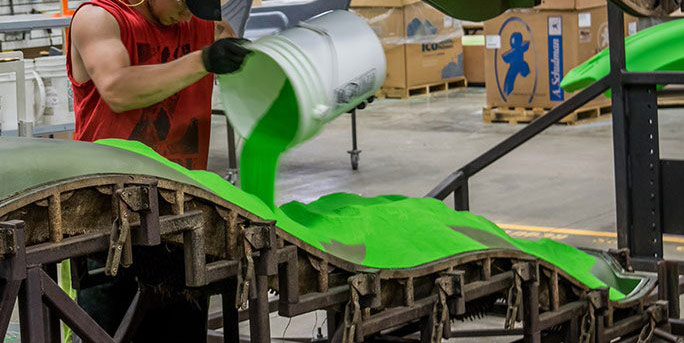
Rotational Molding Materials
Most rotational molded products are made from some sort of polyethylene (PE), a commodity based thermoplastic. PE is offered in a number of grades and classifications. Other materials can also be used, but there are limitations on the material selection. This is due to the need for the materials to be pulverized. You can see a full list of PEs and other rotomolding materials below.
Rotomolding Materials Include:
- Linear Low Density Polyethylene (LLDPE)
- Medium Density Polyethylene (MDPE)
- High Density Polyethylene (HDPE)
- Low Density Polyethylene (LDPE)
- Cross Link Polyethylene (XLPE)
- EVA Co-polymer (EVA)
- Polyvinylchloride (PVC)
- Nylon
- Polycarbonate (PC)
- Polypropylene (PP)
Rotational Molding Process
1. Loading the Mold
First, polyethylene resin is pulverized into a powdered form and is loaded into a mold. The mold is sealed shut and rotated to ensure no powder escapes. The mold with the polymer is then added to an oven.
2. Heating and Rotating the Mold
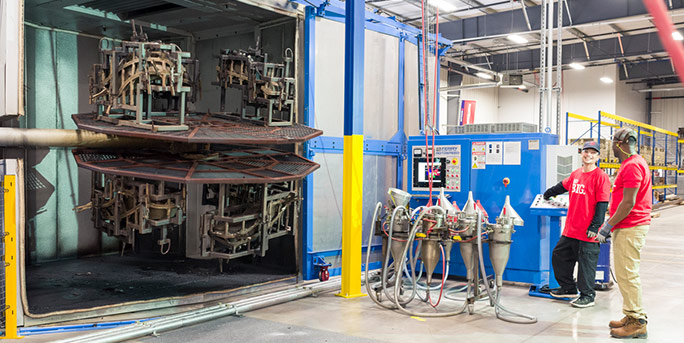
The mold is then heated in an oven and rotated. During this process the resin will adhere the mold walls. It’s important to pay close attention to the time the mold spends in the oven. Too long in the oven, and the resin will degrade, reducing its strength and durability, and too little time in the oven will render the resin incomplete.
While being heated, the mold is rotated on two or more axes, rotating at different speeds. This allows for the polymer to spread evenly throughout the mold, and provides for a clean, polished look.
3. Cooling the Mold
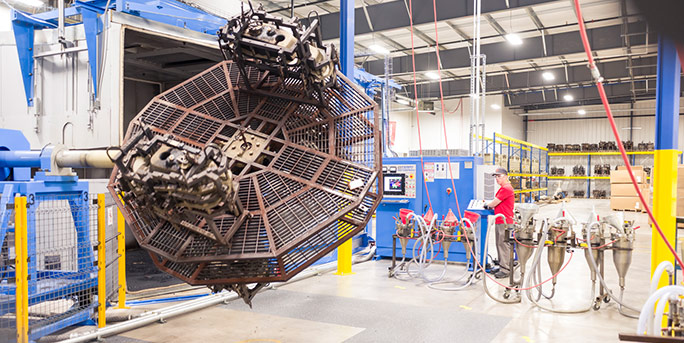
After heating, the mold is cooled by a fan until it can be safely handled by the operator. During cooling, the new rotomolded part will shrink so it can be easily removed. Cooling typically takes ten minutes. It’s important for the cooling rate to be kept within a certain range. Rapid cooling (like using a water spray) could shrink and, in turn, warp the new rotomolded part.
4. Mold Removal
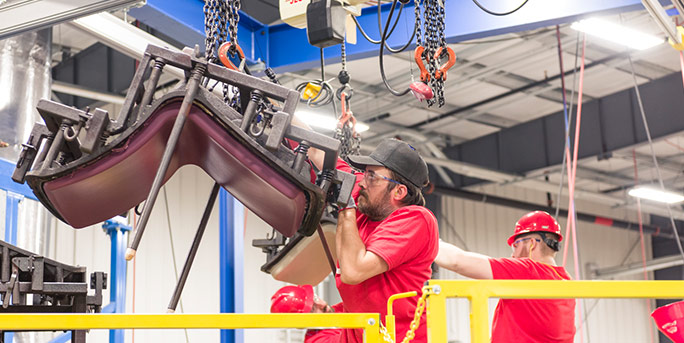
The final step in the process is the removal of the mold from the new rotomolded product. Typically, a mold release agent (MRA) aids in the process. Some common MRA’s include sacrificial coatings (like silicones), semi-permanent coatings (these are most prevalent in today’s rotomolding industry, the active in these is typically a polysiloxane), and permanent coatings (most often some form of PTFE). Once the mold is removed, you now have your new rotomolded product or part.
5. Finishing
With robotic cutting and routing, Dutchland utilizes the latest technologies to ensure the accuracy, consistency and finish of your products. We also offer services like molded-in graphics and inserts, rigid and flexible foam filling, complete assembly and packaging customized to your needs.
6. Warehousing and Drop Shipping
With nearly 200,000 sq. ft. of manufacturing & warehousing space, Dutchland can fulfill all of your product storage and distribution needs. We have the ability to ship your products directly to the customer – from single-unit shipment to large retail shipments.
Learn more about Dutchland’s Rotational Molding & Value-Added Services
Advantages of Rotomolding
Why has rotomolding become a popular way to manufacture plastic products over the years? Mostly due to the durability of the products. Rotomolded plastic can withstand most any elements and last the test of time, making it much more durable than metal and other materials. Rotomolded products are also cost-effective due to their lighter nature, making them cheaper and easier to ship. Lastly, rotomolded plastic provides more design flexibility. From the specifying of wall thickness, to producing multi-wall parts, you have control of the design. Rotomolding also allows for a molded logo, as opposed to a product sticker that may peel over time.
Learn more about the Benefits of Rotational Molding
About Dutchland
Dutchland is the #4 custom rotomolder in the country and serves a variety of industries across geographies. Some of these industries include food and beverage, industrial and commercial, furniture, marine and watercraft, outdoors, recreation, vehicles, and agriculture, among many others. One thing you’ll notice across industries is that we specialize in going BIG, from big parts to big volumes. We can product products up to 500 pounds and 17 feet in length. Dutchland is ready to take on your next project.

